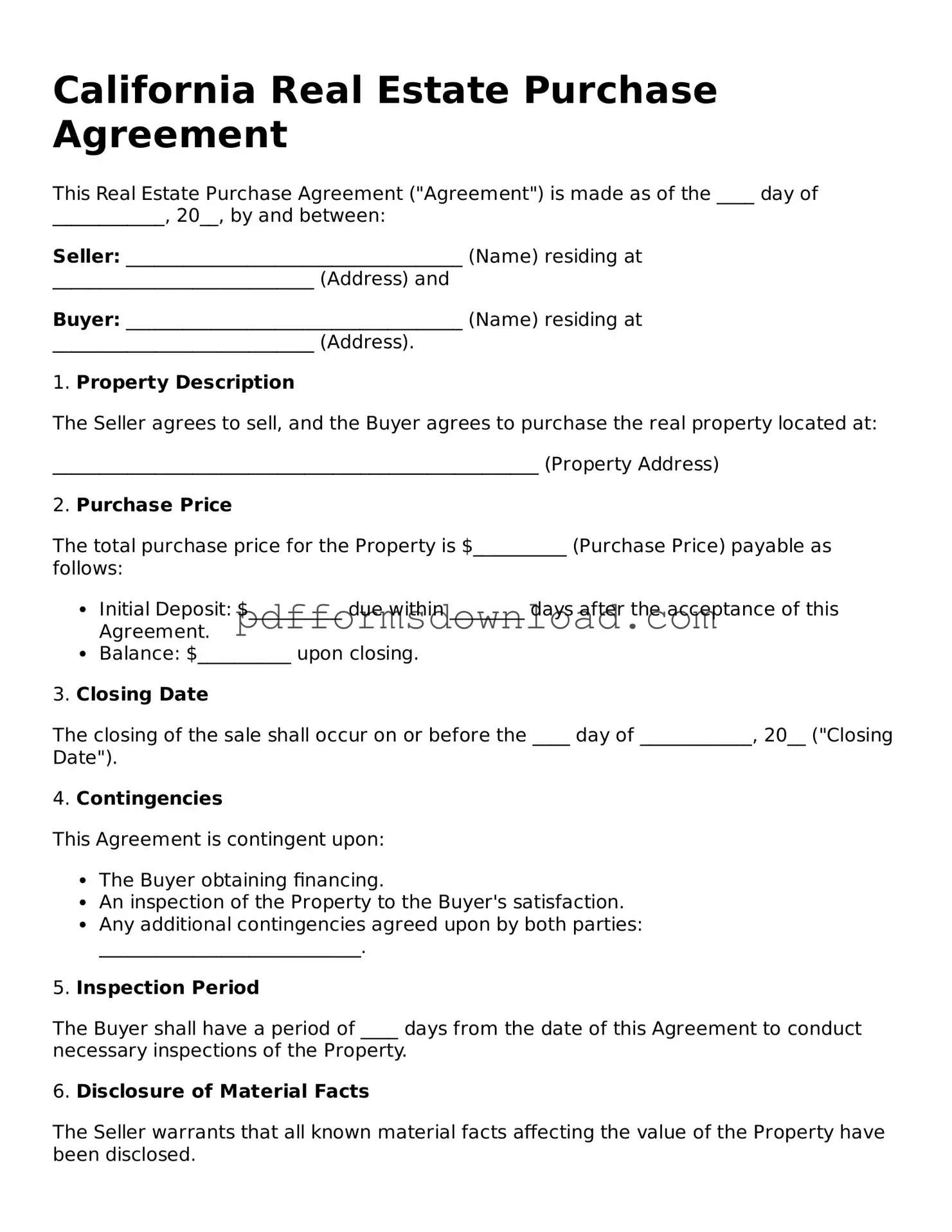What is a California Real Estate Purchase Agreement?
The California Real Estate Purchase Agreement is a legal document used to outline the terms and conditions of a real estate transaction. It serves as a binding contract between the buyer and seller, detailing the sale price, property description, and any contingencies that must be met before the sale can proceed. This agreement is crucial for protecting the interests of both parties involved in the transaction.
What are the key components of the agreement?
Key components of the California Real Estate Purchase Agreement include the identification of the buyer and seller, a detailed description of the property, the purchase price, the earnest money deposit, and the closing date. Additionally, it may outline any contingencies, such as financing or inspection requirements, and specify what items will be included in the sale, such as appliances or fixtures.
How does the agreement address contingencies?
Contingencies are conditions that must be met for the sale to proceed. The California Real Estate Purchase Agreement allows buyers and sellers to specify these conditions clearly. Common contingencies include securing financing, satisfactory completion of a home inspection, and the sale of the buyer's current home. If a contingency is not satisfied, the buyer may have the right to withdraw from the agreement without penalty.
What happens if either party breaches the agreement?
If either the buyer or seller fails to fulfill their obligations under the California Real Estate Purchase Agreement, it is considered a breach of contract. The non-breaching party may have several options, including seeking damages, enforcing the contract, or terminating the agreement. It is important for both parties to understand their rights and obligations to avoid potential disputes.
Is it necessary to have a real estate agent when using this agreement?
While it is not legally required to have a real estate agent when using the California Real Estate Purchase Agreement, having one can be beneficial. Agents provide valuable expertise in navigating the complexities of real estate transactions, including understanding the terms of the agreement. They can help ensure that all necessary disclosures are made and that the transaction proceeds smoothly.
